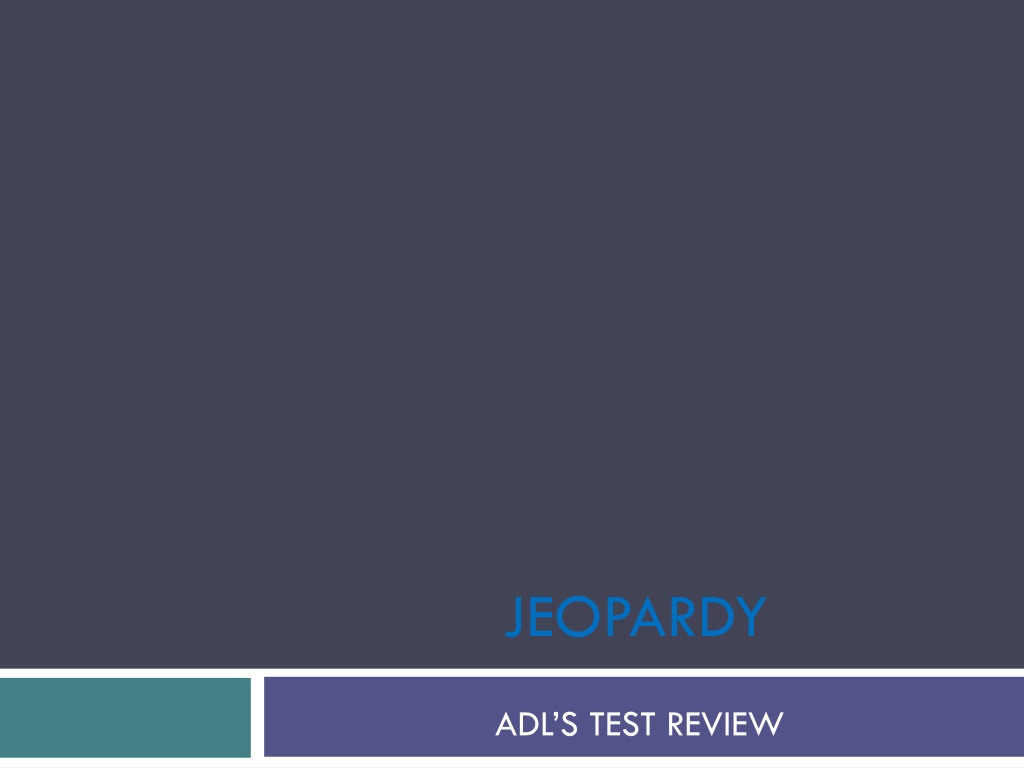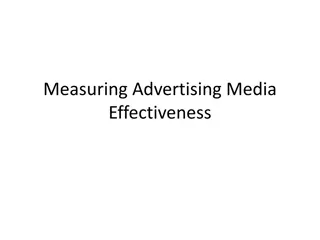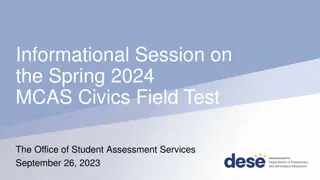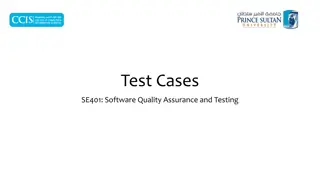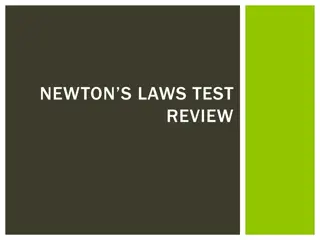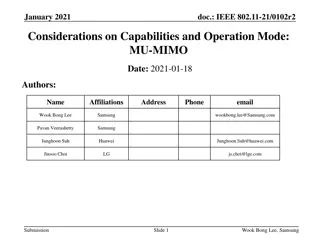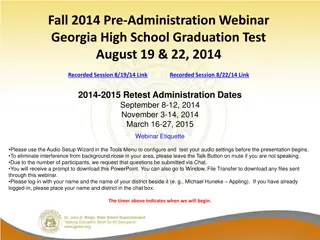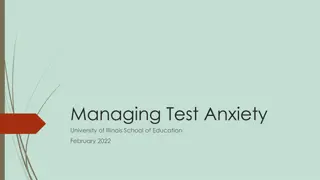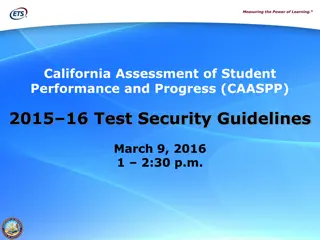JEOPARDYADLS Test Review
This review covers the JEOPARDYADLS test material to help you prepare for success. Discover key topics and practice questions to enhance your knowledge and boost your confidence. Dive deep into essential concepts for a comprehensive understanding of the test structure and content. Use this review as a valuable resource to excel in the JEOPARDYADLS exam.
Download Presentation

Please find below an Image/Link to download the presentation.
The content on the website is provided AS IS for your information and personal use only. It may not be sold, licensed, or shared on other websites without obtaining consent from the author.If you encounter any issues during the download, it is possible that the publisher has removed the file from their server.
You are allowed to download the files provided on this website for personal or commercial use, subject to the condition that they are used lawfully. All files are the property of their respective owners.
The content on the website is provided AS IS for your information and personal use only. It may not be sold, licensed, or shared on other websites without obtaining consent from the author.
E N D
Presentation Transcript
JEOPARDY ADL S TEST REVIEW
Dressing Patient Feeding Shaving/Hair Care Oral Care Bathing Patient/Backrub/ Random 100 100 100 100 100 200 200 200 200 200 300 300 300 300 300 400 400 400 400 400 500 500 500 500 500
100 Question: When feeding your patient, use a _______ degree angle when holding the spoon. Answer: 90
200 Question: If a patient has dysphagia, allow them to use a straw to make swallowing easier. True or False Answer: false
300 Question: Fill spoon or fork __________ to ______full. Answer: 1/3 to full
400 Question: A ___________, _________, and/or _______ assess for the right food thickness needed for patients with difficulty swallowing. Answer: Speech/language pathologist or therapist, nurse, and doctor
500 Question: Name four signs or symptoms of Aspiration. Answer: choking, coughing, difficulty breathing during or after meals, abnormal breathing or respiratory sounds, decreased spo2 after eating
100 Question: Patients who are unconscious, vomiting, experiencing high temperature, or receiving certain drying medications require oral care at least every ______ hours. Answer: 2
200 Question: Hold a tooth brush at a __________ degree angle when brushing a patient s inner and outer aspects of teeth. Start with the _____aspect, moving to the _______ aspect of the teeth. Answer: 45, inner, outer
300 Question: When cleaning a patients dentures, rinse them with ________water. Answer: cool/ lukewarm, NOT HOT OR COLD
400 Question: When replacing dentures in a patient s mouth, put in the __________first, thenthe __________. Answer: bottom, top
500 Question: Name four actions that can prevent aspiration. Answer: Help person with meals Position Pt. as upright as possible Have Pt. stay in upright position an hour after eating Check person s mouth after eating for pocketing (inside cheeks, under tongue, on roof of mouth) Remove any food left in mouth
100 Question: Brushing the hair helps _______the scalp and prevent ________. Answer: stimulate circulation, prevents scalp disease, tangles, matting
200 Question: If hair is matted and tangled from gum, you may use ________ or _______ to get the tangles out. Answer: peanut butter, ice
300 Question: To clean the fingernails, soak them in soapy water __________minutes, and then use the _______end of an orange stick to push the cuticles back. Answer: 5- 10 minutes, blunt
400 Question: Shaving may be prohibited or special precautions may be required for patients on_____________. Answer: anticoagulants
500 Question: If skin is nicked during shaving, __________ directly over area with a ______ and report to immediate supervisor. Answer: apply pressure, clean gauze while wearing gloves
100 Question: Before leaving a patient in a tub or shower, instruct patient how to____________________. Answer: use the emergency bathroom button
200 Question: _____________, also known as ________, could be sign of poor circulation or disease. Pay special attention to the hands, feet, and toes. Answer: Swelling, edema
300 Question: Fill a bath basin about _____ full of warm water at about ____________degrees F. Answer: 2/3, 105-110
400 Question: : Name 5 checkpoints after completing a bed bath. Answer: position for comfort (alignment), elevate side rails, lower bed, call light, supplies in reach, leave area clean put equipment away
500 Question: Redness, or____________ , of the skin could be a sign of a pressure sore. __________could be sign of poor circulation. ______________ could be sign of liver disease. Answer: Erythema, Cyanosis, Jaundice
100 Question: Question: To test temperature of food, check a small amount on __________. Answer: test on the wrist
200 Dress the ____________first, then ________ side. Undress the_________ side first, then the _________.
300 Question: Backrubs are considered a part of a daily bath unless________________. If you find a red area on the skin, it could be a _____ caused by an ___________and needs to be _________ immediately. Answer: contraindicated by the patient s condition, rash, allergic reaction, reported
400 Question: _______is difficulty breathing. _________ is dizziness. Excessive perspiration is called _________. ___________ is abnormal drowsiness. Answer: Dyspnea, Vertigo, diaphoresis, Lethargy
500 Question: A patient with _________ means they have weakness or partial paralysis on one side of the body. Answer: Hemiparesis
